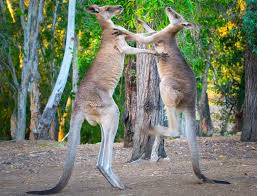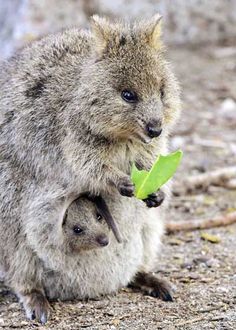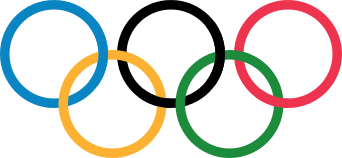Stamp: Melbourne 1956; Red Kangaroo (Osphranter rufus) (Fujairah (Fujeira) 1972)
Melbourne 1956; Red Kangaroo (Osphranter rufus) (Fujairah (Fujeira) 1972)
05 July (Fujairah (Fujeira) ) within release History of the Olympic Games: Posters goes into circulation Stamp Melbourne 1956; Red Kangaroo (Osphranter rufus) face value 65 Qatari dirham
| Stamp Melbourne 1956; Red Kangaroo (Osphranter rufus) in catalogues | |
|---|---|
| Michel: | Mi: FU 1052B |
| Colnect codes: | Col: FU 1972.07.05-3m |
Stamp is square format.
Also in the issue History of the Olympic Games: Posters:
- Stamp - Amsterdam 1928; Tulip face value 20;
- Stamp - Antwerp 1920, Cloth Hall; Bruges face value 10;
- Stamp - Athens 1896; Acropolis face value 1;
- Stamp - Berlin 1936; Charlottenburg Castle face value 30;
- Stamp - Helsinki 1952 face value 55;
- Mini Sheet - History of the Olympic Games: Posters face value 20;
- Stamp - Kiel 1972; City Hall face value 5;
- Stamp - London 1908; Guards Cavalry face value 4;
- Stamp - London 1948; Sir Winston Churchill face value 45;
- Stamp - Los Angeles 1932; Golden Gate Bridge, San Francisco face value 25;
- Stamp - Melbourne 1956; Red Kangaroo (Osphranter rufus) face value 65;
- Stamp - Mexico City 1968; Tepoztlan's Cathedral face value 1.50;
- Stamp - Munich 1972, Glockenspiel at the Town Hall face value 10;
- Stamp - Munich 1972, Glockenspiel at the Town Hall face value 10;
- Stamp - Munich 1972; Konrad Adenauer face value 2;
- Stamp - Munich 1972; Olympic Tower face value 4;
- Stamp - Munich 1972; Theatine Church face value 3;
- Stamp - Paris 1900; Napoleon I face value 2;
- Stamp - Paris 1924; Charles de Gaulle face value 15;
- Stamp - Rome 1960; St. Peter's Basilica face value 70;
- Stamp - St. Louis 1904; Statue of Liberty, New York face value 3;
- Stamp - Stockholm 1912; City View face value 5;
- Stamp - Tokyo 1964; Jimmu Tenno Statue face value 1;
Stamp Melbourne 1956; Red Kangaroo (Osphranter rufus) it reflects the thematic directions:
Animals are multicellular, eukaryotic organisms of the kingdom Animalia (also called Metazoa). All animals are motile, meaning they can move spontaneously and independently, at some point in their lives. Their body plan eventually becomes fixed as they develop, although some undergo a process of metamorphosis later on in their lives. All animals are heterotrophs: they must ingest other organisms or their products for sustenance.
Kangaroos are marsupials from the family Macropodidae (macropods, meaning "large foot"). In common use the term is used to describe the largest species from this family, the red kangaroo, as well as the antilopine kangaroo, eastern grey kangaroo, and western grey kangaroo.Kangaroos are indigenous to Australia and New Guinea. The Australian government estimates that 42.8 million kangaroos lived within the commercial harvest areas of Australia in 2019, down from 53.2 million in 2013.Mammals are any vertebrates within the class Mammalia (/məˈmeɪli.ə/ from Latin mamma "breast"), a clade of endothermic amniotes distinguished from reptiles (including birds) by the possession of a neocortex (a region of the brain), hair, three middle ear bones and mammary glands. All female mammals nurse their young with milk, secreted from the mammary glands. Mammals include the largest animals on the planet, the great whales. The basic body type is a terrestrial quadruped, but some mammals are adapted for life at sea, in the air, in trees, underground or on two legs. The largest group of mammals, the placentals, have a placenta, which enables the feeding of the fetus during gestation. Mammals range in size from the 30–40 mm (1.2–1.6 in) bumblebee bat to the 30-meter (98 ft) blue whale. With the exception of the five species of monotreme (egg-laying mammals), all modern mammals give birth to live young. Most mammals, including the six most species-rich orders, belong to the placental group. The largest orders are the rodents, bats and Soricomorpha (shrews and allies). The next three biggest orders, depending on the biological classification scheme used, are the Primates (apes and monkeys), the Cetartiodactyla (whales and even-toed ungulates), and the Carnivora (cats, dogs, seals, and allies).
Marsupials are a diverse group of mammals belonging to the infraclass Marsupialia. They are natively found in Australasia, Wallacea, and the Americas. One of the defining features of marsupials is their unique reproductive strategy, where the young are born in a relatively undeveloped state and then nurtured within a pouch on their mothers abdomen
The modern Olympic Games or Olympics (French: Jeux olympiques) are leading international sporting events featuring summer and winter sports competitions in which thousands of athletes from around the world participate in a variety of competitions. The Olympic Games are considered the world's foremost sports competition with more than 200 nations participating. The Olympic Games are held every four years, with the Summer and Winter Games alternating by occurring every four years but two years apart.
A poster is a large sheet that is placed either on a public space to promote something or on a wall as decoration. Typically, posters include both textual and graphic elements, although a poster may be either wholly graphical or wholly text. Posters are designed to be both eye-catching and informative. Posters may be used for many purposes. They are a frequent tool of advertisers (particularly of events, musicians, and films), propagandists, protestors, and other groups trying to communicate a message. Posters are also used for reproductions of artwork, particularly famous works, and are generally low-cost compared to the original artwork. The modern poster, as we know it, however, dates back to the 1840s and 1850s when the printing industry perfected colour lithography and made mass production possible
Sport is a form of physical activity or game. Often competitive and organized, sports use, maintain, or improve physical ability and skills. They also provide enjoyment to participants and, in some cases, entertainment to spectators. Many sports exist, with different participant numbers, some are done by a single person with others being done by hundreds. Most sports take place either in teams or competing as individuals. Some sports allow a "tie" or "draw", in which there is no single winner; others provide tie-breaking methods to ensure one winner. A number of contests may be arranged in a tournament format, producing a champion. Many sports leagues make an annual champion by arranging games in a regular sports season, followed in some cases by playoffs.






